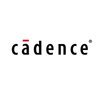Filter interviews by
Mirafra Technologies Physical Design Engineer Interview Questions and Answers
Mirafra Technologies Physical Design Engineer Interview Experiences
1 interview found
I applied via Referral and was interviewed before Nov 2021. There were 2 interview rounds.

(2 Questions)
- Q1. Interview based on EMIR ànalysis 1. Static and Dynamic Ir drop questions
- Q2. Power and signal EM questions
Interview Preparation Tips
Physical Design Engineer Jobs at Mirafra Technologies
Top trending discussions






Interview questions from similar companies

(1 Question)
- Q1. Congestion analysis

(1 Question)
- Q1. Sdc basics TCL coding

I applied via Campus Placement and was interviewed in Aug 2024. There were 3 interview rounds.
Aotitude,core que on all subjects in ece
(2 Questions)
- Q1. INTERNSHIP EXPERIENCE
- Ans.
I completed a 6-month internship at XYZ Company where I gained hands-on experience in physical design tools and methodologies.
Worked on floorplanning, placement, and routing of digital designs
Utilized tools such as Cadence Innovus and Synopsys ICC
Collaborated with cross-functional teams to optimize design performance
- Q2. ON DSD,VLSI,ANALOG ELECTRONICS
(2 Questions)
- Q1. APTITUDE,MATH,VLSI,DSD
- Q2. VLSI (HARD QUESTION BASED ON INDUSTRY LEVEL LIKE ON CIRCUIT HE GIVES ONE SCENARIO U HAVE TO ANSWER IT)
Interview Preparation Tips
I applied via Naukri.com and was interviewed before Dec 2020. There were 3 interview rounds.
Interview Questionnaire
4 Questions
- Q1. C Programming
- Q2. Data structures
- Q3. Os concepts
- Q4. Communication protocols
Interview Preparation Tips

Software Developer Interview Questions & Answers
Cadence Design Systemsposted on 16 Sep 2021
I appeared for an interview before Sep 2020.
(3 Questions)
Round duration - 30 minutes
Round difficulty - Easy
- Q1. How do you search for a node in a linked list?
- Ans.
To search for a node in a linked list, iterate through the list and compare each node's value with the target value.
Start at the head of the linked list
Iterate through each node by following the 'next' pointer
Compare the value of each node with the target value
Return the node if found, otherwise return null
- Q2. How do you detect a loop in a linked list?
- Ans.
To detect a loop in a linked list, we can use Floyd's Cycle Detection Algorithm.
Initialize two pointers, slow and fast, at the head of the linked list.
Move slow pointer by one step and fast pointer by two steps.
If there is a loop, the two pointers will eventually meet.
Alternatively, we can use a hash set to store visited nodes and check for duplicates.
- Q3. Implement a stack using a singly linked list.
- Ans.
Implement a stack using a singly linked list
Create a Node class with data and next pointer
Create a Stack class with top pointer pointing to the top of the stack
Implement push, pop, and peek operations by manipulating the linked list
Example: Node class - Node { int data; Node next; }
(2 Questions)
Round duration - 40 minutes
Round difficulty - Easy
- Q1. What is the top view of a binary tree?
- Ans.
The top view of a binary tree shows the nodes visible from the top when looking down from the root node.
The top view of a binary tree is the set of nodes visible from the top when looking down from the root node.
Nodes at the same horizontal distance from the root are considered at the same level in the top view.
If multiple nodes are at the same horizontal distance, only the topmost node at that level is included in the...
- Q2. Explain the process of deleting a node from a linked list, covering all possible cases.
- Ans.
Deleting a node from a linked list involves updating pointers to maintain the list's integrity.
Identify the node to be deleted by traversing the list
Update the previous node's next pointer to skip the node to be deleted
Free the memory allocated to the node to be deleted
Interview Preparation Tips
Do practice a lot of questions on linked list and stacks as these are two most important data structures asked in the interview. Also, try to implement it yourself without seeing the solution. Also prepare for Computer Science subjects like Operating System, Database Management System, Computer Networks, etc. I prepared them through Coding Ninjas notes which were simpler and easy to understand.
Application resume tips for other job seekersKeep your resume short and up to mark and check spellings before submitting it for the interview process.
Final outcome of the interviewSelectedSkills evaluated in this interview

Interview Preparation Tips
Experience: Written test for a duration of 1.5 hours
Test was based on VLSI design
Round: Interview
Experience: Technical and HR round are held together
Digital VLSI - Verilog skills, state machines, setup and hold time issues were tested
General Tips: Some questions in the test are repeated, so it might help to talk to a few people in advance
Questions are mainly related to VLSI mainly-Digital IC design, analog circuits
Skills: Verilog Skills, State Machines, Setup and Hold Times issues
College Name: IIT MADRAS
Interview Preparation Tips
Experience: Test was subjective and questions were asked from basic analog, digital design, VHDL and VLSI circuits.
Round: Technical Interview
Experience: Had 3 technical interviews each around 25 minutes. They asked me about my summer internship and
questions from microcontroller architecture and its interfacing. Then they asked me the questions
from those problems which I didn't attempt in the written test.
Tips: For electrical students, it might be a bit challenging. I took an elective on Microcontroller in 7th sem which
helped me a lot during the interview. You might want to brush up your concepts of 8085, digital, OPAMPs
and analog
Round: HR Interview
Experience: My family background and my future goals were asked. They asked me about
my internship project and wanted to know what I learnt during the internship. Then I asked a few questions
from them about the company work culture and growth opportunities
College Name: IIT Roorkee
Interview Questionnaire
2 Questions
- Q1. Why are you interested in freescale ?
- Ans.
I am interested in Freescale because of their innovative technology and strong reputation in the industry.
Freescale has a history of developing cutting-edge technology
Their reputation in the industry is strong and respected
I am excited about the opportunity to work with a company that values innovation and excellence
- Q2. Hobbies, family background etc. and future plans
Interview Preparation Tips
Total Questions: 15
Round: Technical Interview
Experience: Panel discussed questions attempted incorrectly or not attempted. Topics asked separately: RAM, MOSFET, Memory, Interrupts, FIFO etc.Few puzzles were also asked.
General Tips: Topics that should be covered: Digital Electronics, Microprocessors, Basic Electronics, K Map and FSM questions.
Skills:
College Name: BIT MESRA

Software Engineer Interview Questions & Answers
Cadence Design Systemsposted on 7 May 2017
I appeared for an interview in Feb 2017.
Interview Questionnaire
7 Questions
- Q1. What is a malloc function and where is it used and how is it different from new?
- Ans.
malloc is a function in C that dynamically allocates memory on the heap. It is used to allocate memory for variables or data structures.
malloc is used in C programming language.
It is used to allocate memory on the heap.
malloc is different from 'new' in C++ as it does not call constructors for objects.
- Q2. What is the difference between C++ and Objective C and where will you use it?
- Ans.
C++ is a general-purpose programming language while Objective C is a superset of C used for iOS and macOS development.
C++ is widely used for developing applications, games, and system software.
Objective C is mainly used for iOS and macOS development.
C++ supports both procedural and object-oriented programming paradigms.
Objective C is an object-oriented language with dynamic runtime features.
C++ has a larger community a...
- Q3. What is the difference between class container and class composition?
- Ans.
Class container is a class that holds objects of other classes, while class composition is a way to combine multiple classes to create a new class.
Class container holds objects of other classes, acting as a collection or container.
Class composition combines multiple classes to create a new class with its own behavior and attributes.
In class container, the objects are typically stored in a data structure like an array o...
- Q4. There are fifteen horses and a racing track that can run five horses at a time. You have to figure out the top 3 horses out of those and you don't have any timer machine to measure. How will you find the t...
- Ans.
Divide the horses into groups of 5 and race them. Take the top 2 from each race and race them again. Finally, race the top 2 horses to determine the top 3.
Divide the horses into 3 groups of 5 and race them.
Take the top 2 horses from each race and race them again.
Finally, race the top 2 horses to determine the top 3.
- Q5. What is the most difficult problem that you have solved (during work) till now and why you think you could do so?
- Ans.
Developing a real-time data processing system for a high-traffic e-commerce website
Implemented a distributed system architecture to handle large volumes of data
Optimized algorithms for efficient data processing and storage
Utilized caching mechanisms to improve system performance
Worked closely with cross-functional teams to troubleshoot and resolve issues
Example: Successfully reduced data processing time by 50% by imple
- Q6. Why you want to change your current job?
- Ans.
Seeking new challenges and opportunities for growth.
Looking for a more challenging role to further develop my skills
Interested in exploring new technologies and industries
Seeking better career advancement opportunities
Want to work in a more collaborative team environment
- Q7. What is the width of a tree? How will you calculate the width of the tree?
- Ans.
The width of a tree is the maximum number of nodes at any level in the tree.
To calculate the width of a tree, we can perform a level order traversal and keep track of the maximum number of nodes at any level.
We can use a queue data structure to perform the level order traversal.
At each level, we count the number of nodes in the queue and update the maximum width if necessary.
Interview Preparation Tips
Skills evaluated in this interview
Mirafra Technologies Interview FAQs
Tell us how to improve this page.
Mirafra Technologies Interviews By Designations
- Mirafra Technologies Software Engineer Interview Questions
- Mirafra Technologies Senior Software Engineer Interview Questions
- Mirafra Technologies Embedded Software Engineer Interview Questions
- Mirafra Technologies Software Developer Interview Questions
- Mirafra Technologies Design & Verification Engineer Interview Questions
- Mirafra Technologies Python Developer Interview Questions
- Mirafra Technologies Data Scientist Interview Questions
- Mirafra Technologies Senior Engineer Interview Questions
- Show more
Interview Questions for Popular Designations
- Physical Design Engineer Trainee Interview Questions
- Embedded Engineer Interview Questions
- Design & Verification Engineer Interview Questions
- Verification Engineer Interview Questions
- Embedded Developer Interview Questions
- Embedded Firmware Engineer Interview Questions
- Physical Education Teacher Interview Questions
- Post Silicon Validation Engineer Interview Questions
- Show more
Physical Design Engineer Interview Questions from Similar Companies
Mirafra Technologies Physical Design Engineer Reviews and Ratings
based on 6 reviews
Rating in categories
|
Senior Software Engineer
293
salaries
| ₹7 L/yr - ₹23.5 L/yr |
|
Member Technical Staff
140
salaries
| ₹10 L/yr - ₹32 L/yr |
|
Software Engineer
111
salaries
| ₹3 L/yr - ₹12 L/yr |
|
Physical Design Engineer
54
salaries
| ₹5 L/yr - ₹17.1 L/yr |
|
Software Engineer2
50
salaries
| ₹5 L/yr - ₹12.8 L/yr |

Apar Industries

TDK India Private Limited

Molex

Micron Technology
- Home >
- Interviews >
- Mirafra Technologies Interview Questions >
- Mirafra Technologies Physical Design Engineer Interview Questions












